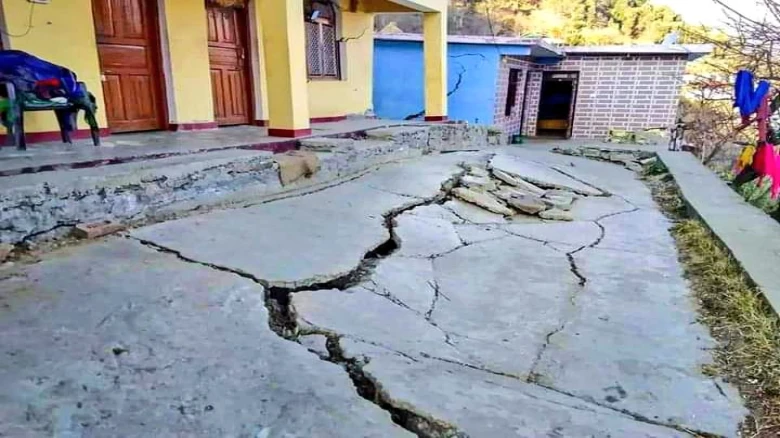Regional

During the expert survey of Joshimath, scientists discovered massive cracks in the walls and floors of homes, as well as significant cracks...
Digital Desk: The crisis in Uttarakhand's holy town Joshimath is now worsening, with the government confirming that the town is actually sinking, displacing thousands of people living in the town. The families have been relocated to safer locations while the Centre is trying to fix the issue.
During the expert survey of Joshimath, scientists discovered massive cracks in the walls and floors of homes, as well as significant cracks in roads and the foundation of infrastructure projects. People are now blaming climate change and infrastructure projects for the issue.
In an interview with PTI, Kalachand Sain, director of the Wadia Institute of Himalayan Geology, revealed the top reasons behind the Joshimath sinking problem, citing three major factors that contributed to the ground of Joshimath's inevitable crisis.
Mr Sain told PTI, "The three principal factors are Joshimath's vulnerable foundations as it was developed on the debris of a landslide triggered by an earthquake more than a century ago, its location in seismic zone V which is more prone to earthquakes besides gradual weathering and water percolation which reduce the cohesive strength of the rocks over time."
Here are five reasons why Uttarakhand's Joshimath is sinking:
1. One of the reasons for the instability of the Joshimath surface is the NTPC Hydro Power project. The Tapovan Vishnugad Hydropower Plant is a 520 MW run-of-river hydroelectric project that has caused damage to Joshimath's ground and river.
2. According to experts, tourism and construction activities in Joshimath are two of the primary reasons why the town is sinking. The town sees a footfall of lakhs every year, which is why the landslide-prone ground is facing instability.
3. Joshimath's growing population and tourism have resulted in a lot of growth, such as an increase in the number of restaurants and hotels, which leads to more development projects and construction activities.
4. Joshimath is a former landslide and earthquake zone, hence the majority of the town was built on landslide debris, resulting in smooth and worn rocks and loose dirt on the surface.
5. According to experts, Joshimath is located in seismic zone V, which is more prone to earthquakes, as well as slow weathering and water percolation, which diminish the cohesive strength of the rocks over time.
Leave A Comment